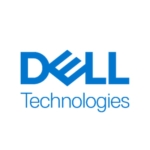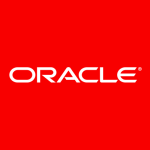What is our primary use case?
It's a tenant environment. We sell it off to customers who need an environment, depending on the scale of their company, where there might be a couple of servers or 100 to 200 servers.
We are our own cloud provider. We use VMware vCloud Director because we provide that to our customers.
For UCS, we are on version 6.2. For NetApp, we are on 9.5.
How has it helped my organization?
Our private cloud sector of our company has grown exponentially thanks to the ease of deployment of the FlexPod architecture. We are also able to deploy a console to customers who want on-prem environments in a smaller deployment structure with a UCS Mini and direct-attached storage. So, it's helped us exponentially grow the business.
All-flash has helped the company a lot, especially for business critical applications. We found that customers want more performance than ever based on what is out there in the market. We find that innovation and integration with the whole FlexPod design has helped a lot.
What is most valuable?
The guides that we use to install FlexPods are always up-to-date. This is really helpful, especially if there is a new product with NetApp moving so far forward and Cisco as well. For them to join together and update a centralized document for the install process, it is really good. It helps us understand if there are features from the first version that we installed while upgrading that we need to implement. Those are in the document. So, we find that document useful and helpful when moving forward.
The solution’s validated designs for major enterprise apps in our organization is very important. It helps us to understand what we need to do and deliver, doing it at a supported level for our customers.
What needs improvement?
It would be nice to have something like an automated, upgrade solution The tasks needed to upgrade the hardware within FlexPod are still quite behind compared to some of its other aspects. That's more on the Cisco side. For the NetApp side, the upgrade process is quite simple. It's been simplified. So, that's something that could be looked at.
It has gone to HTML5, but it's still quite a bit bland. It still seems a bit like there were some features in the Java version that are quite hard to get into in the HTML5 version of UCS Manager, where you go to a profile and you need to drag it in. You can't move the box across. All the boxes are different sizes. If you have a lot of names, then you can't move it across, which is quite annoying when you're trying to do it.
I would like more with the integration pieces, e.g., more with the REST APIs to be able to access it remotely.
The footprint in the data center is quite large, especially when you scale out. Maybe find some hardware in the future, where if a new blade comes out, then Cisco can say, "Look, we'll buy those blades back off you, and we'll give you this blade for X amount of money." A buyback scheme would be good for hardware, and even NetApp as well. Something like a buyback scheme for blades and stuff moving forward would be good, because I know that they're going to put more power into them. E.g., replacing four blades might equal one blade, which would be awesome, but we are still going to have those four blades around. Maybe having something where it will give you this much money for these blades so we can upgrade. That would be perfect.
With the upgrading, making that a little bit more streamlined and a bit easier to do, so it doesn't require as many man hours to do. I would like prerequisites for an upgrade.
Buyer's Guide
FlexPod XCS
January 2026
Learn what your peers think about FlexPod XCS. Get advice and tips from experienced pros sharing their opinions. Updated: January 2026.
879,477 professionals have used our research since 2012.
What do I think about the stability of the solution?
It's very stable. Since we've had it in, knock on wood, it's been absolutely flawless. We've had some issues, but that's to do with the upgrades and mainly with the fabric interconnects, and they can be a bit finicky. They're not as robust. They're robust in a way if you don't touch them, they look fine. But, in the upgrade process, we've had a lot of issues where there would either be corrupted images or they wouldn't upgrade, which would cause one of the switches to fail. Some of that stuff is very worrying. But from a performance perspective, it's worked as it should.
What do I think about the scalability of the solution?
It's highly scalable. It scales really well, but that also comes back to how you want to scale it. In terms of whether you want to add more chassis and if you want to add anything more to that. Then, that comes under the costings of the data center because the chassis are quite big. However, the scalability of it is perfect. We haven't had an issues with it.
How are customer service and support?
The technical support is pretty good. I would give it a seven or eight out of 10. A full 10 would be having the automated upgrading, getting them to do the upgrades, as that would take a lot of time off us having to do them. I am sure that there is a team you can get for that support, but it's quite expensive. Maybe that type of support for upgrades can be bundled in when someone buys a FlexPod deployment. Most of our time on the environment is spent on upgrading of the infrastructure.
We have really good support from NetApp. We get really good, really fast support from Cisco, as well. E.g., if there is a failed memory chip in one of the host servers that needs replacements, they are always on time. They send it out when they need to, and if the problem is not resolved, then they move that forward to the next tier.
Which solution did I use previously and why did I switch?
We used NetApp from the start. Before my time, I'm not too sure what they were using. I think before it was just storage on servers, like integrated in. As long as I've been here, I've been using NetApp.
At the time we went with that solution, public clouds didn't exist. However, knowing that it does integrate with public clouds is an absolute bonus. It's awesome because we're moving towards that type of integration. Knowing this makes our lives a lot easier because we don't have to move from where we are to get to where we want to go. We've already got what we want, which is absolutely amazing. So, it's great.
We are very strong NetApp partners.
How was the initial setup?
The initial setup was straightforward. Complexity was added more from a customer perspective, where you need that custom setup for what they require. With the bundle, we did get to go to training for FlexPod's deployment and that sort of area. That also helped us a lot to understand the nuts and bolts and detail of what it is as well, which helped a lot with that knowledge.
What about the implementation team?
We work with Cisco and NetApp for the deployment. The guides are absolutely intuitive. You go from start to finish, deploying it all in one. In terms of time, we have used them to reference different aspects of how we should set it up if there are custom requirements, because not all deployments are put it in and deploy it as we go. We have had some custom requirements over time, but the initial one was just straight in and cable. It was quite intuitive for us, which was good. We didn't need for anyone to come out and install it.
What was our ROI?
I haven't seen ROI.
From an application point of view, customers have seen an improvement in response times for mainly database-based applications, and the need to have a lot of reads and writes for all-flash storage. The upgrades with the hosts from UCS to the new blades with PASA processes and more memory have also improved.
Which other solutions did I evaluate?
From a flexible deployment and scalability point of view, we got NetApp. From enterprise and beyond, they are doing above and beyond anything that anyone else is doing at the moment.
Cisco are the leaders in LAN technology. With their hardware for unified communication of the UCS bundle, it's so straightforward and easy to set up. It integrates with a lot of other major vendors, which makes our lives a lot easier.
What other advice do I have?
I would definitely support integrating FlexPod within a company, depending on their requirements. Even if it wasn't a a full, flexible deployment, just having a smaller deployment of the UCS Mini with a smaller NetApp for a customer, it is so scalable. You can do it for a smaller customer to an enterprise customer. I would fully support them implementing this into a data center based on their requirements.
The solution has made our staff more efficient, enabling them to spend time on tasks that drive our business forward, but there's still a lot of manual overhead that needs to be done. We're installing new chassis or upgrades. Upgrades is a really big one.
We find that the UCS shells are still quite power intensive. Maybe moving forward to the new releases of the blades that they have in their FlexPod deployment, we might be able to change a couple of blades to one blade because the power is exactly the same. They have the same quality of processing and memory. Right now, we find that it does take up a lot of space and power. Hopefully, in the future, once we do go through the upgrade process, pull out the old blades, and whatever we need to replace, we might do that.
I would rate it a nine out of 10. Nothing is perfect. You always have that one percent where you say, "Aw, I wish it was doing this," but at the end of the day, it can't. You're always going to be a bit picky.
Which deployment model are you using for this solution?
Private Cloud
If public cloud, private cloud, or hybrid cloud, which cloud provider do you use?
Other
Disclosure: My company has a business relationship with this vendor other than being a customer. Partner.








